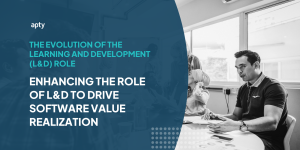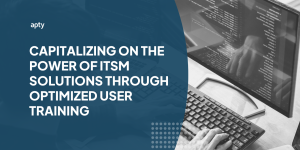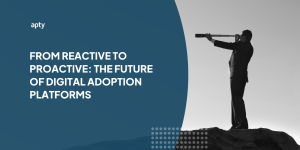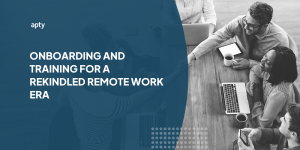While companies like Amazon make headlines for their back-to-the-office mandates, the reality is that working from home (WFH) is not going away, with a large portion of U.S. workers reporting that they would quit or look for another job if ordered back to an office. This is forcing organizations to reconsider the way they onboard and train, especially for their remote workers.
The fact is that employees overall (both on-site and remote) are highly prone to leaving within the first three months on the job. This represents huge potential for waste, as the average cost of hiring a new full-time employee is almost $5,000, which is considerable. Much of this “premature churn” is the result of insufficient training, and remote workers are much more likely to feel undertrained than their on-site counterparts, which is why a special level of care needs to go into designing training for them including:
Offering ‘Micro-Learning’

Micro-learning refers to a set of compact e-learning modules and digital adoption features that are designed to reduce learner fatigue and can easily and seamlessly be incorporated into learners’ daily routines and tasks. User adoption features from a digital adoption platform can sprinkle in learning and development (L&D) materials throughout a user’s interactions with an application, condensing underutilized training materials into bite-size chunks that can be tied to specific processes in the moment of need. In a micro-learning model, information is spaced out, delivered in smaller bits, and consumed at the remote worker’s convenience. In addition, micro-learning often leverages ‘push’ technology – distributing learning content in short sprints (for example, 3-5 minute short videos, interactive quizzes, or games) to reduce the cognitive load on users and increase engagement.
What HR Challenges Does This Solve? According to one study, organizations using micro-learning have seen a 20 percent increase in employee productivity and a 23 percent increase in employee satisfaction – largely due to increased worker confidence with learning material. Other cognitive science research shows that breaking down large volumes of information into smaller “chunks” can improve learner focus, reduce the potential for overload, and make the material easier to remember. All of this is especially important for remote workers who are more susceptible to feeling undertrained and unprepared.
Accommodate the “Forgetting Curve” with Real-Time Learning Content Delivery

At many organizations, training consists of a single, intensive information immersion. However, such approaches often fail because they neglect to accommodate the “forgetting curve,” or the fact that most people don’t remember newly learned information after one week. The “forgetting curve” puts remote workers at a particular disadvantage because it’s not as if they can peek over a cube wall and ask a fellow worker for help with something. Where remote workers are concerned, it is therefore critical to offer real-time learning content precisely at the point that it’s needed (for example, reminders, alerts, banners, and information bubbles with supporting links or videos).
What HR Challenges Does This Solve? In addition to helping circumvent the “forgetting curve,” the delivery of learning content in real-time further reinforces the benefits of micro-learning by reducing the cognitive load on users and therefore increasing engagement. In other words, the worker doesn’t have to ponder and ask questions at the point of need; rather, the information he or she is looking for is intuitively presented and better understood. Real-time delivery of learning content can make remote workers feel more engaged and less disenchanted due to a bad digital UX, which ultimately helps maximize employee training costs and reduce unnecessary waste associated with premature churn.
Prove Adoption and Value

Today’s organizations are investing tens of millions of dollars into new software tools, and it is no longer sufficient to simply “guess” what the ROI might be and assume the organization is realizing value. Especially as we face a possible economic downturn and reduced growth, C-level executives must be able to prove software’s return on investment, with measurements including increased adoption and productivity. In this context, it becomes vital to embrace a data-driven approach to software adoption, which means gleaning measurable proof points that document remote workers’ effective use of new technology. Across various departments, there needs to be activity tracking and analytics to deliver insights on what and whether users are utilizing the organization’s software.
What HR Challenges Does This Solve? By being able to “see” remote worker progress even when those workers are “unseen,” organizations can gain real insights into adoption, process inefficiencies, and productivity increases. Analytics can also precisely identify the areas that are giving remote workers trouble so that these areas can be supplemented with content – thereby making the learning experience smoother and more successful. In this way, organizations are no longer left to guess, assume, or hope that there will be a positive return on investment (ROI). Rather, companies will have more tangible, accurate data at their disposal. For HR leaders in particular, when remote workers are empowered to adopt technology with little one-on-one oversight and micromanagement, the benefits can include shorter onboarding cycles, faster time to employee value, and reductions in churn and the associated waste.
This is why digital adoption platforms prioritizing software value realization have garnered such traction, and CIOs are making plans to assist HR departments by deploying such SaaS products on software across the enterprise. In fact, according to Gartner, by 2025, 70 percent of organizations will use digital adoption platforms within their technology stack to overcome still insufficient application user experiences.
Remote workers continue to constitute a significant portion of most organizations, and that is why attention needs to be paid to effectively training these workers. If an organization can nail the remote-first landscape in this way, it can maximize the impact of remote workers overall – in their jobs and in their homes. By breaking up learning content into smaller chunks via micro-learning; incorporating “in the moment” learning content delivery; and measuring learners’ progress to identify and address problem areas quickly, companies can help their remote workers better navigate challenging onboarding and training journeys while demonstrating ROI from their sizable software investments.













